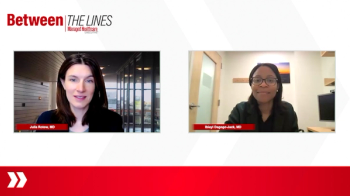
Vaccine Accessibility Limited by Social Determinants of Health
Vaccine accessibility has been limited for patients impacted by health disparities and social determinants of health (SDoH).
Episodes in this series

James Lewis, PharmD, FIDSA:Barriers to vaccine access as related to social determinants of health have come to the forefront during the COVID-19 pandemic. We and a lot of other health care institutions tried to find ways to improve that access. For example, our institution [Oregon Health & Science University] developed several mobile platforms, including vans that went around to certain parts of the city; worked with certain groups, such as churches or other community organizations; and served a lot of populations that have historically been underserved medically. We tried to work with them to develop outreach programs where we were able to do vaccinations on-site. We took the vaccines to them. I don’t know if that type of process is sustainable going forward, but it is a nice model for health care institutions and can provide novel ways to get to some of these populations.
A major learning point for me, during all this, was that a lot of the groups we approached as an organization were receptive. Churches, in particular, stepped up and were phenomenal about getting the word out. A lot of other organizations were extremely impressive as well, messaging their members, “This is when it’s going to be available. We encourage you to do it. Come on out.” We got a very good turnout. Early in the COVID-19 pandemic, everybody wanted that vaccine. I’m not as optimistic that those numbers look as good compared with other vaccines, which were perceived to be less urgent. But it would be a lot better than we currently do in some of these populations. How to balance the best use of resources in this population is a discussion that’s going to take people much smarter than I to figure out.
The way we tried to limit some of the disparities in cultural and ethnic groups was the structure with regard to going to those populations. At our clinics in areas where a lot of underserved populations have lived, we went out of our way to make sure there were adequate resources, and an ample supply of vaccine…. It’s an area in which we continue to struggle in the United States. But the recognition of the challenge is a big part of it. If you don’t know that there’s a problem, you can’t fix it. We’re at a point where we know that there’s a problem. The data consistently show us that this is an issue, and how to best improve things. It’s an open-ended question. It will be interesting, over the next few years, to see how programs such as ours impacted populations that are historically underserved. Did it improve compared with historical norms? Administrators and policymakers want to know because they’re obviously looking for processes that work in this population. The data for what works in scenarios like this are unfortunately very thin.
Transcript edited for clarity.
Newsletter
Get the latest industry news, event updates, and more from Managed healthcare Executive.



















































